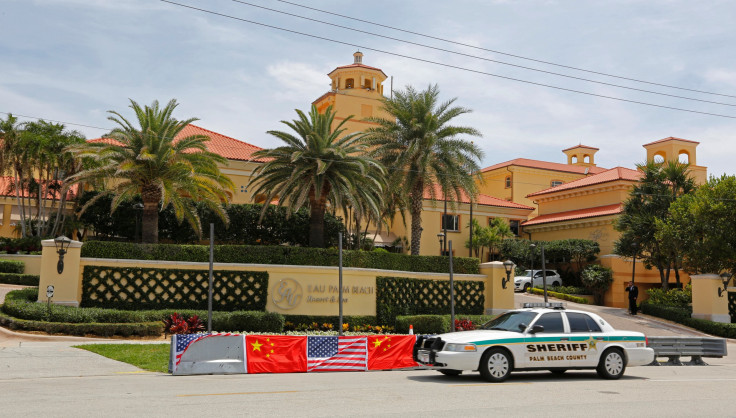How Much Does The US Trade With China? Trump To Meet With Chinese President Xi Jinping

President Donald Trump and his Chinese counterpart Xi Jinping planned to kick off what the American leader said would be a “very difficult” private meeting at Trump’s Mar-a-Lago Club resort in Florida on Thursday afternoon, during which both men were expected to discuss the U.S. trade deficit with China.
The U.S. imported $462.8 billion worth of goods from China in 2016, and exported $115.8 billion, yielding a goods trade deficit of $347 billion, according to data from the U.S. Census Bureau. The total has mostly grown over the past several decades, from $258.5 billion in 2007, $49.7 billion in 1997 and just $2.8 billion in 1987.
Read: Trump Wants To Destroy North Korea Missile Threat With China And Japan's Help
Although both exports and imports with China generally rose in value over the course of 2016, exports fell 2.7 percent and imports dropped by close to 21 percent between January and February of this year.
While China was America’s largest goods trading partner in 2015, the U.S. raked in a $29.5 billion surplus in trade of services with the country that year, according to the Office of the U.S. Trade Representative.
Chinese Vice Foreign Minister Zheng Zeguang said Friday that "China doesn’t intentionally seek trade surpluses," and that the swelling U.S. deficit and Chinese surplus resulted from differences in the structures of the two countries’ economies, the Wall Street Journal reported. The diplomat was likely referring to China’s success as a manufacturing-heavy economy—which, due to its cheap export products, has stunted that same sector in the U.S., leading to gradual job losses and wage reductions nationwide—and America’s transition to a service economy since the 1990s.
Read: Jared Kushner Sets Up Meetings With China
Many, including Trump himself, have pointed to currency manipulation as the key source of the deficit’s expansion. A drop in the yuan’s value would drive down the price of China’s exports relative to those of competing American products, making the former more attractive on the global market. But Beijing has been working to hold up the value of its currency this year, leading economists to largely expect Trump to steer clear of the contentious talking point.
Either way, attempts to draw down the trade deficit would likely cause job losses in both countries, including 2.6 million jobs that result from the trade relationship in the U.S., according to a January report from Oxford Economics, and could drive up the cost of those billions of dollars worth of inexpensive goods shipped from China to the U.S. for consumers. It would also hurt American companies, especially automakers, as China hosts the world’s largest car market by far.
Efforts to give American firms and workers an edge pushing down Beijing’s 21 to 30 percent tariffs on automobile imports have stalled, as Quartz recently pointed out, but could be completely derailed if the U.S. decided to implement Trump's protectionist strategy.
© Copyright IBTimes 2024. All rights reserved.












